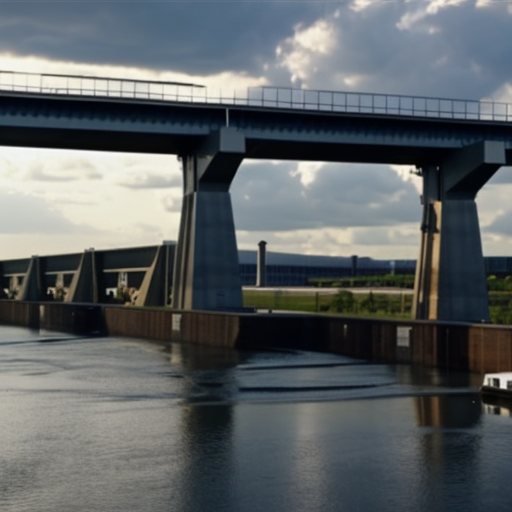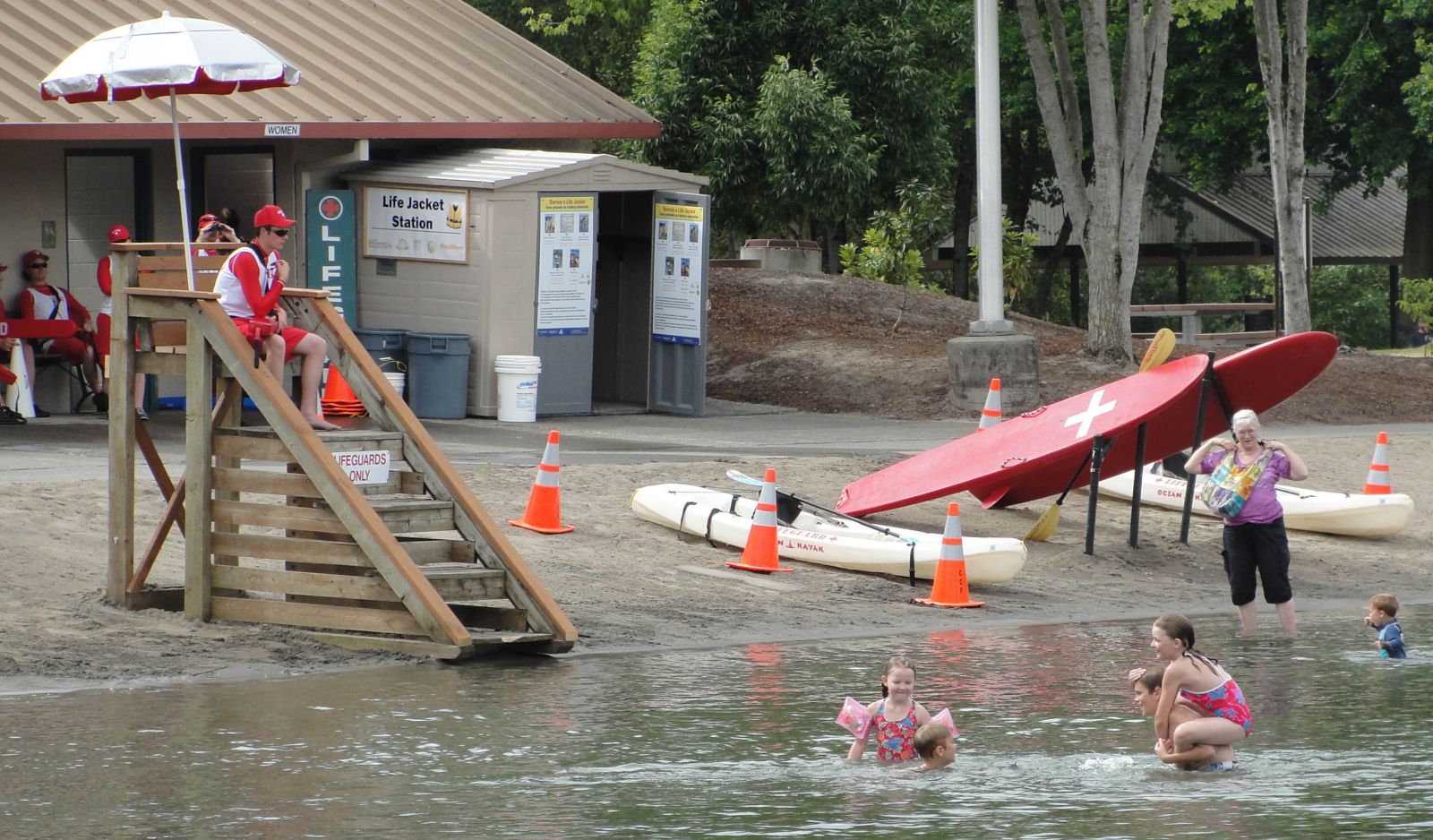
PHILADELPHIA –
Federal Emergency Management Agency (FEMA) Senior Officials, Victoria Salinas and Janice Barlow, toured DC Water’s Blue Plains Advanced Wastewater Treatment Plant to celebrate Disaster Resilience Month this August. The tour highlighted the innovative work the District of Columbia and DC Water are doing to reduce flood risk.
Overview of DC Water’s Emergency Management Program
Along with officials from DC’s Homeland Security and Emergency Management Agency (HSEMA), FEMA leaders were given an overview of DC Water’s emergency management program and the work they’ve been doing to mitigate hazards. The Blue Plains facility is the largest advanced wastewater treatment plant in the world, servicing more than 2.5 million people in Washington DC, Maryland, and Virginia. It is located at the southern tip of the District along the Potomac River and has experienced flooding due to hurricanes and storms in the past.
Floodwall Construction and FEMA Funding
Over the past seven years, DC Water has applied for and received several types of FEMA funding to develop, plan, and construct a floodwall around their Blue Plains facility. Currently one section is finished, with three more planned soon using FEMA funding. When complete, these floodwall segments will protect the plant from a 500-year flood event, keeping critical infrastructure safe and operating 24/7.
Importance of FEMA Funding for Resilience
“Reducing risk to critical infrastructure is a high priority for FEMA,” said Victoria Salinas, FEMA Senior Official Performing Duties of Deputy Administrator of Resilience. “DC Water’s Blue Plains facility tour illustrated how FEMA funding is being used to reduce risk from future flooding, and a commitment to building resilience in Washington DC, Virginia, and Maryland. Between these investments and a planned micro-grid, this means that this wastewater system that serves over 2 million residents will remain operational during extreme events. This utility will now be protected from the devastating effects of climate-related storm surge and sea level rise for years to come.”
Total FEMA Investment in the Project
Once FEMA awards the latest grant funds, the agency will have invested more than $22.7 million in this project through the Pre-Disaster Mitigation (PDM), Flood Mitigation Assistance (FMA), and Building Resilient Infrastructure and Communities (BRIC) programs.
Recognition of DC Water’s Efforts
“DC Water is a great example of how a utility, community, or municipality can leverage the many different types of FEMA funding available to fund not only the construction of a project, but the planning and scoping phases as well,” said FEMA Region 3 Deputy Regional Administrator Janice Barlow. “It was exciting to see firsthand the work DC Water is doing to protect critical infrastructure that affects many residents throughout Region 3.”
FEMA’s Focus on Mitigation Efforts
During the month of August, FEMA is highlighting successful mitigation efforts across the country to raise awareness of ways communities are being more climate resilient. You can learn more here.
###
Victoria Salinas is the Senior Official Performing Duties of Deputy Administrator for Resilience at FEMA and Janice Barlow is the Deputy Regional Administrator for FEMA Region 3.
FEMA’s mission is helping people before, during, and after disasters. FEMA Region 3’s jurisdiction includes Delaware, the District of Columbia, Maryland, Pennsylvania, Virginia, and West Virginia.
Stay informed of FEMA’s activities online: videos and podcasts are available at fema.gov/medialibrary and youtube.com/fema. Follow us on Twitter at twitter.com/femaregion3.
SDGs, Targets, and Indicators
1. Which SDGs are addressed or connected to the issues highlighted in the article?
- SDG 11: Sustainable Cities and Communities
- SDG 13: Climate Action
- SDG 9: Industry, Innovation, and Infrastructure
2. What specific targets under those SDGs can be identified based on the article’s content?
- SDG 11.5: By 2030, significantly reduce the number of deaths and the number of people affected and substantially decrease the direct economic losses relative to global gross domestic product caused by disasters, including water-related disasters, with a focus on protecting the poor and people in vulnerable situations.
- SDG 13.1: Strengthen resilience and adaptive capacity to climate-related hazards and natural disasters in all countries.
- SDG 9.1: Develop quality, reliable, sustainable, and resilient infrastructure, including regional and transborder infrastructure, to support economic development and human well-being, with a focus on affordable and equitable access for all.
3. Are there any indicators mentioned or implied in the article that can be used to measure progress towards the identified targets?
- Indicator for SDG 11.5: Number of deaths, missing persons, and directly affected persons attributed to disasters per 100,000 population.
- Indicator for SDG 13.1: Number of countries that have integrated mitigation, adaptation, impact reduction, and early warning into their national policies, strategies, and planning.
- Indicator for SDG 9.1: Proportion of the rural population who live within 2 km of an all-season road.
Table: SDGs, Targets, and Indicators
| SDGs | Targets | Indicators |
|---|---|---|
| SDG 11: Sustainable Cities and Communities | Target 11.5: By 2030, significantly reduce the number of deaths and the number of people affected and substantially decrease the direct economic losses relative to global gross domestic product caused by disasters, including water-related disasters, with a focus on protecting the poor and people in vulnerable situations. | Indicator: Number of deaths, missing persons, and directly affected persons attributed to disasters per 100,000 population. |
| SDG 13: Climate Action | Target 13.1: Strengthen resilience and adaptive capacity to climate-related hazards and natural disasters in all countries. | Indicator: Number of countries that have integrated mitigation, adaptation, impact reduction, and early warning into their national policies, strategies, and planning. |
| SDG 9: Industry, Innovation, and Infrastructure | Target 9.1: Develop quality, reliable, sustainable, and resilient infrastructure, including regional and transborder infrastructure, to support economic development and human well-being, with a focus on affordable and equitable access for all. | Indicator: Proportion of the rural population who live within 2 km of an all-season road. |
Behold! This splendid article springs forth from the wellspring of knowledge, shaped by a wondrous proprietary AI technology that delved into a vast ocean of data, illuminating the path towards the Sustainable Development Goals. Remember that all rights are reserved by SDG Investors LLC, empowering us to champion progress together.
Source: fema.gov

Join us, as fellow seekers of change, on a transformative journey at https://sdgtalks.ai/welcome, where you can become a member and actively contribute to shaping a brighter future.






